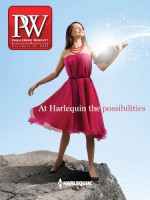"The enthusiasm we have heard for the last few days has been extraordinary. And that has been echoed across the country,” said Oren Teicher, CEO of the American Booksellers Association (ABA), at the fall regional conference of the New England Independent Booksellers Association (NEIBA). Attendees at all eight regional bookseller association conferences this fall were optimistic, due in part to the fact that some regions saw the same level of membership increases as the ABA, which rose 18%, from 1,410 bookstore members in 2010 to 1,664 this past May. The Southern California Independent Booksellers Association (SCIBA) has gone from 44 storefronts to 61 over the past year. According to executive director Andrea Vuleta, stores in her area are doing well, partially because they’re supplementing books with other products. She points to the success of San Diego’s the Grove, which is set up like a department store with books, clothing, fiber arts, jewelry, and home furnishings.
Other regions, like the New Atlantic Independent Booksellers Association (NAIBA), have had membership remain steady. At the same time, older stores across the country continue to transition to new ownership, such as Women and Children First in Chicago, and others are adding additional locations (Green Apple in San Francisco and Carmichael’s Bookstore in Louisville, Ky., for instance).
A strong summer added to the overall positive mood. In New England, some stores had record-breaking days, according to NEIBA’s executive director, Steve Fischer. “Customers [that booksellers] hadn’t seen regularly in one or two years were back, and generally each transaction was up,” he said. On the other side of the country, Hut Landon, executive director of the Northern California Independent Booksellers Association (NCIBA), said that booksellers have held on to the gains they made when Borders closed three years ago. “It’s kind of like we’re retro,” he added. “It’s cool to go to the bookstore.”
Several regionals renamed their fall conferences “discovery” shows, out of consideration of everyone who would attend: publishers, authors, librarians, and booksellers. Eileen Dengler, executive director of NAIBA, said, “the discovery aspect of the show worked. It helped put a focus on new authors, new ideas, and each other.” Discovery was also a success for the Mountains and Plains Independent Booksellers Association (MPIBA), which embraced the theme with a “Discover This Cover” promotion. Reps placed bookmarks in select books and other items, which were later raffled.
The near-daily media focus on the Amazon-Hachette dispute in the weeks leading up to the shows left many booksellers fatigued. But it was a key topic at three conferences: NAIBA, which held a keynote specifically on Amazon; NEIBA, whose members await the opening of the first Amazon warehouse in Massachusetts; and the Southern Independent Booksellers Alliance (SIBA), where James Patterson, an outspoken critic of Amazon’s dealings with Hachette, was honored with a Thanksgiving-style lunch for his bookseller grants.
With their emphasis on authors and education, the regionals are coming to more closely resemble Winter Institute, which offers a galley room in lieu of an exhibit hall. HarperCollins sent 50 authors to the regionals this year, while Penguin and Random House, which exhibited together for the first time since their merger, sent more authors and galleys than last year, according to Ruth Liebmann, v-p director of account marketing at Random House.
Like Winter Institute, several publishers used the regionals to break out big books. Workman did it by combining books and booze, offering a special mixed drink from David Solmonson and Lesley Jacobs Solmonson’s The Twelve Bottle Bar at each show. Abrams sent prankster authors Jory John and Mac Barnett to just about every show to promote The Terrible Two, the first book in their new series (Amulet, Jan. 2015).
Although there were many finished books at the shows, spring releases dominated. “My personal opinion is that the publishers are looking at our shows to launch spring titles. At least 70% of the submissions for authors were for spring titles,” said MPIBA executive director Laura Ayrey. For her the trade show floor continues to be particularly important, since many booksellers in her region don’t see reps.
Author events are key at the Pacific Northwest Booksellers Association (PNBA) and SIBA shows, which featured 110 and 126 authors, respectively. “The idea is to provide as many opportunities [as possible] for the booksellers to meet authors who might visit their stores, which is one of the few ways left for us to do something Amazon can’t,” says PNBA executive director Thom Chambliss. PNBA is also one of the few shows to keep its exhibit hall open for two days, at the request of indie reps. In order to get booksellers to stay, raffle winners had to be present to pick up their prizes after the Book & Author Lunch on the final day of the show. While indie reps did not see a substantial increase in the number of orders they received, they did have better shows because they were busier and saw more accounts, Chambliss said.
It’s too soon to know what will happen at next year’s shows, but it’s unlikely that more regionals will combine. The Great Lakes Independent Booksellers Association (GLIBA) and the Midwest Independent Booksellers Association (MIBA) were the first to do so and launched the Heartland Fall Forum in 2012. “It’s finally starting to feel like our show now,” says GLIBA executive director Deb Leonard, adding that it will continue permanently. NEIBA and NAIBA, which share some members, will continue to explore other types of joint gatherings, like All About the Books last spring and another on current events slated for 2015. At SIBA, executive director Wanda Jewell is planning to add a consumer component to the last day of the show, and she is working with the online book club She Reads to make it happen.



 Volume 261
Issue 45
11/10/2014
Volume 261
Issue 45
11/10/2014





